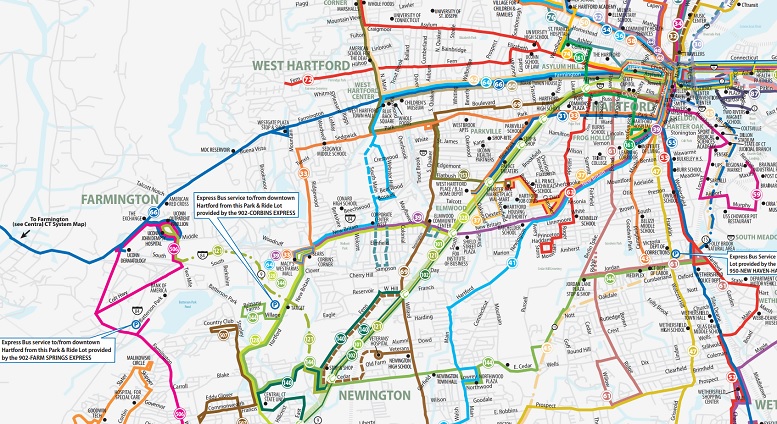Due to cuts in the state budget, Connecticut’s transit system is facing a serious shortfall. So predictably, the state Department of Transportation has proposed rail and bus fare increases. The Hartford Courant reported earlier this month:
The DOT’s public transit operation must make up nearly half of the agency’s $37.5 million budget shortfall, which was created when the General Assembly passed a state budget last spring cutting funds from most agencies to avoid a tax increase. The DOT plans to get part of the money by raising Metro-North and Shore Line East fares by 5 percent, and CT Transit fares by an average of 17 percent.
The obvious alternative to fare increases is to cut service, such as running buses and trains less frequently and for fewer hours each day. This is basically the way it’s always been. But what if there were an alternative to this unfortunate binary? What would it look like?
At a time when the state is laying people off and reducing funding for various departments and agencies, we can either continue to endure haphazard cuts in the name of cost savings, or we can look at this as an opportunity to reconsider how Connecticut will fund and operate its transit network in the future.
Riders are right to expect something in return for higher fares, but ConnDOT won’t be able to deliver without a dramatic overhaul of its transit network. This means providing more frequent service and creating new routes in densely populated areas where there is demand for it. This means eliminating turns and consolidating stops to speed up service. This means scrapping some under-performing routes that have existed for decades and mapping new routes that could attract new riders, or convert occasional riders into all-purpose riders. This means coordinating schedules between modes to ease transfers. This means having a frank conversation about ridership goals versus coverage goals, because you can’t serve anyone well if your goal is to serve everyone.
As luck would have it, there’s already some progress toward making this happen. ConnDOT recently ordered a new bus fleet and GPS tracking is available on most routes in the state. We saw the success of CTfastrak, which features one of the nation’s only true bus rapid transit corridors. And earlier this year, ConnDOT launched a statewide bus study. We’ll have to wait and see what their work yields, but in a state where less than 5 percent of workers commute via transit, there’s certainly room for some innovative thinking.
But Connecticut doesn’t need to reinvent the wheel. Houston’s transit system, METRO, recently completed a total “System Reimagining” which wiped away the old map and drew up new routes from scratch. The result: a 7.5 percent ridership increase system-wide within a year, and they did it without an increase in the system’s operating budget. The Central Ohio Transit Authority in Columbus is embarking on a similar plan.
A transit system reboot alone, however, is unlikely to close out the era of choosing between painful fare increases or painful service cuts. That’s why Connecticut’s leaders must look beyond the state’s borders for a more diverse set of transit revenue streams. Like most transit systems, New York’s Metropolitan Transportation Authority receives operating funds from fares, state and local subsidies, and advertising, but that accounts for only about half of its total income. More than a third of MTA operating revenue comes from dedicated taxes, including, but not limited to a Payroll Mobility Tax paid by employers in downstate New York counties, a Petroleum Business Tax imposed on the import of transportation fuels, and a surcharge on taxi fares paid in New York City. And, of course, because the MTA operates bridges and tunnels in addition to buses and trains, the agency is able to fund the transit system in part (12 percent) with toll revenue.
Can Connecticut diversify its transit funding in such a way? Certainly there are political challenges to any new taxes, but why should raising fares on transit commuters — who earn significantly less on average than people who drive to work — be more tolerable? And then of course there’s the elephant in the room — highway tolls — which Connecticut hasn’t imposed on drivers since the 1980s.


What is the ratio of total cost paid by the automobile driver to government cost of providing everything necessary for the ride versus the total cost paid by the transit rider to government cost of providing everything necessary for the ride? Remember that road infrastructure is used by buses and trucks as well as automobiles and curb space is used by both. Bus maintenance facilities are paid for by the tax payer while automobile maintenance facilities are paid for by the automobile user.